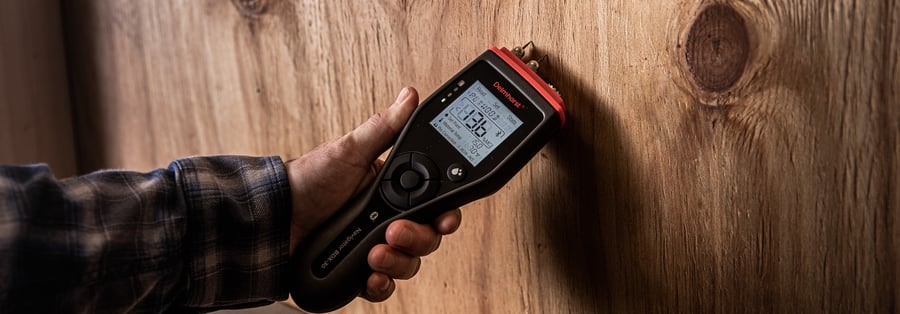The Gold Standard for Concrete Moisture Meters

Completing a major construction project can be a very complicated task—especially when it comes to following ASTM standards. Handling poured concrete is a major issue on any such job. If you were to build on concrete before it was ready, you could end up with numerous problems, such as cracks in the foundation or moisture problems in wood flooring installed above concrete subfloors.
To adhere to ASTM-F-2170 standards for concrete, you need to know the relative humidity (RH) conditions deep inside a concrete slab. Only with accurate information about the RH conditions in a concrete slab can you make reliable assumptions about whether or not it’s safe to build on top of the slab.
Companies offer concrete moisture meters that claim to offer the ability to get moisture readings out of concrete slabs, but these devices are rarely up to the ASTM-F-2170 standard. What is the gold standard for concrete moisture meters?
Meeting the Requirements of the ASTM-F-2170 Standard
To get a measurement that meets the requirements of the ASTM standard, thermo-hygrometers with in-situ probes are a must. A thermo-hygrometer takes a measurement of the relative humidity for a given area (which is why they’re sometimes called RH meters) and generates a numerical reading for the user. In-situ probes are inserted into specially-prepared holes in the concrete so the RH meter can connect to them and get a reading from deep inside the slab.
Compare this to most so-called concrete moisture meters that try to simply use a surface-level only test of concrete moisture. Also, because there are many different formulations of concrete mix, creating a standardized moisture reading scale for concrete is effectively impossible.
Rather than trying to test moisture in concrete mix at the top layer of the slab, RH meters with in-situ probes use a more thorough process involving:
- Drilling a hole into concrete;
- Inserting a concrete sleeve into the hole;
- Giving the sleeves time to acclimate to the moisture conditions in the slab; and
- Connecting the RH meter to the sensor and taking an RH reading.
This is necessary because it is the only method approved by the ASTM as providing quantitative measurements on the condition of the slab. Pin-type and pinless moisture meters, which are also sometimes uses on concrete, only provide an indication of where elevated moisture levels may be present near the surface of the slab.
Because they can take readings deep inside of a concrete slab, thermo-hygrometers are the true gold standard for concrete moisture meters. Learn more about moisture meters and thermo-hygrometers now!
Subscribe to Our Blog
Post Related

Reduce Risks During Harvest Season with a Moisture Meter


